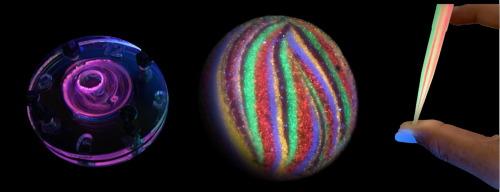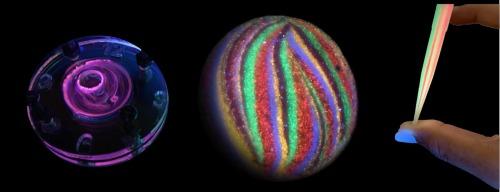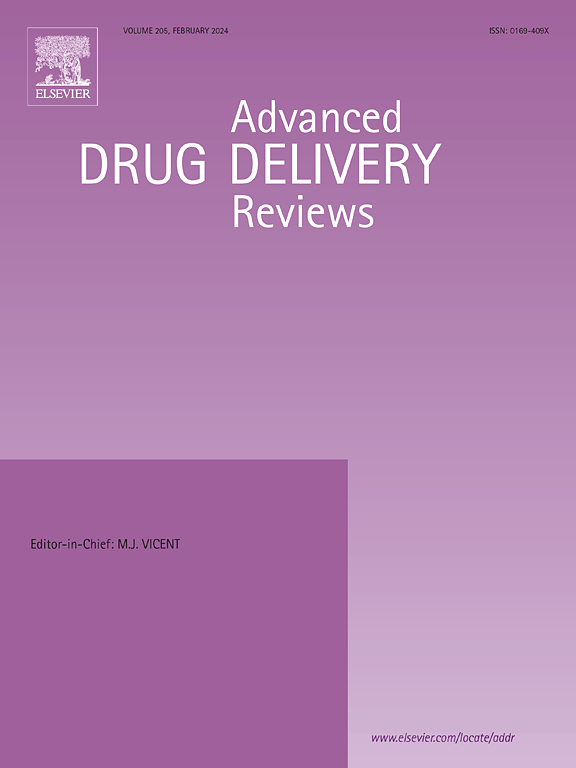Chaotic (bio)printing in the context of drug delivery systems
IF 15.2
1区 医学
Q1 PHARMACOLOGY & PHARMACY
引用次数: 0
Abstract
Chaotic (bio)printing, an innovative fabrication technique that uses chaotic flows to create highly ordered microstructures within materials, may be transformative for drug delivery systems. This review explores the principles underlying chaotic flows and their application in fabricating complex, multi-material constructs designed for advanced drug delivery and controlled release. Chaotic printing enables the precise layering of different active ingredients—a feature that may greatly facilitate the development of polypills with customizable release profiles. Recently, chaos-assisted fabrication has been extended to produce micro-architected hydrogel spheres in a high-throughput manner, potentially enhancing the versatility and efficiency of drug delivery methods. In addition, chaotic bioprinting enables the creation of evolved tissue models that more accurately emulate physiological systems, providing a more relevant platform for drug testing. This review also highlights the unique advantages of chaotic printing, including the ability to fabricate tissues with organized porosity and pre-vascularized structures, addressing critical challenges in tissue engineering. Despite its promising capabilities, challenges remain, particularly in expanding the range of materials compatible with chaotic printing. Continued research and development in this area are essential to fully realize the potential of chaotic (bio)printing in advancing drug delivery, paving the way for the next generation of smart drug delivery systems and functional tissue models for drug testing.


药物输送系统中的混沌(生物)印刷
混沌(生物)打印是一种创新的制造技术,它利用混沌流在材料中制造出高度有序的微结构,可能会改变药物输送系统。本综述探讨了混沌流动的基本原理及其在制造复杂的多材料结构中的应用,这些结构旨在实现先进的药物输送和控释。混沌打印可实现不同活性成分的精确分层--这一特性可能会极大地促进具有可定制释放特征的多丸剂的开发。此外,混沌辅助制造已被扩展到以高通量方式生产微结构水凝胶球,从而有可能提高给药方法的多样性和效率。此外,混沌生物打印技术还能创建进化的组织模型,从而更准确地模拟生理系统,为药物测试提供更相关的平台。本综述强调了混沌打印的独特优势,包括能够制造具有有组织孔隙率和预血管化结构的组织,从而解决组织工程中的关键难题。尽管混沌打印的能力前景广阔,但挑战依然存在,特别是在扩大与混沌打印兼容的材料范围方面。要充分发挥混沌(生物)打印在推进药物输送方面的潜力,为下一代智能药物输送系统和药物测试功能组织模型铺平道路,就必须在这一领域继续进行研究和开发。
本文章由计算机程序翻译,如有差异,请以英文原文为准。
求助全文
约1分钟内获得全文
求助全文
来源期刊
CiteScore
28.10
自引率
5.00%
发文量
294
审稿时长
15.1 weeks
期刊介绍:
The aim of the Journal is to provide a forum for the critical analysis of advanced drug and gene delivery systems and their applications in human and veterinary medicine. The Journal has a broad scope, covering the key issues for effective drug and gene delivery, from administration to site-specific delivery.
In general, the Journal publishes review articles in a Theme Issue format. Each Theme Issue provides a comprehensive and critical examination of current and emerging research on the design and development of advanced drug and gene delivery systems and their application to experimental and clinical therapeutics. The goal is to illustrate the pivotal role of a multidisciplinary approach to modern drug delivery, encompassing the application of sound biological and physicochemical principles to the engineering of drug delivery systems to meet the therapeutic need at hand. Importantly the Editorial Team of ADDR asks that the authors effectively window the extensive volume of literature, pick the important contributions and explain their importance, produce a forward looking identification of the challenges facing the field and produce a Conclusions section with expert recommendations to address the issues.

 求助内容:
求助内容: 应助结果提醒方式:
应助结果提醒方式:


